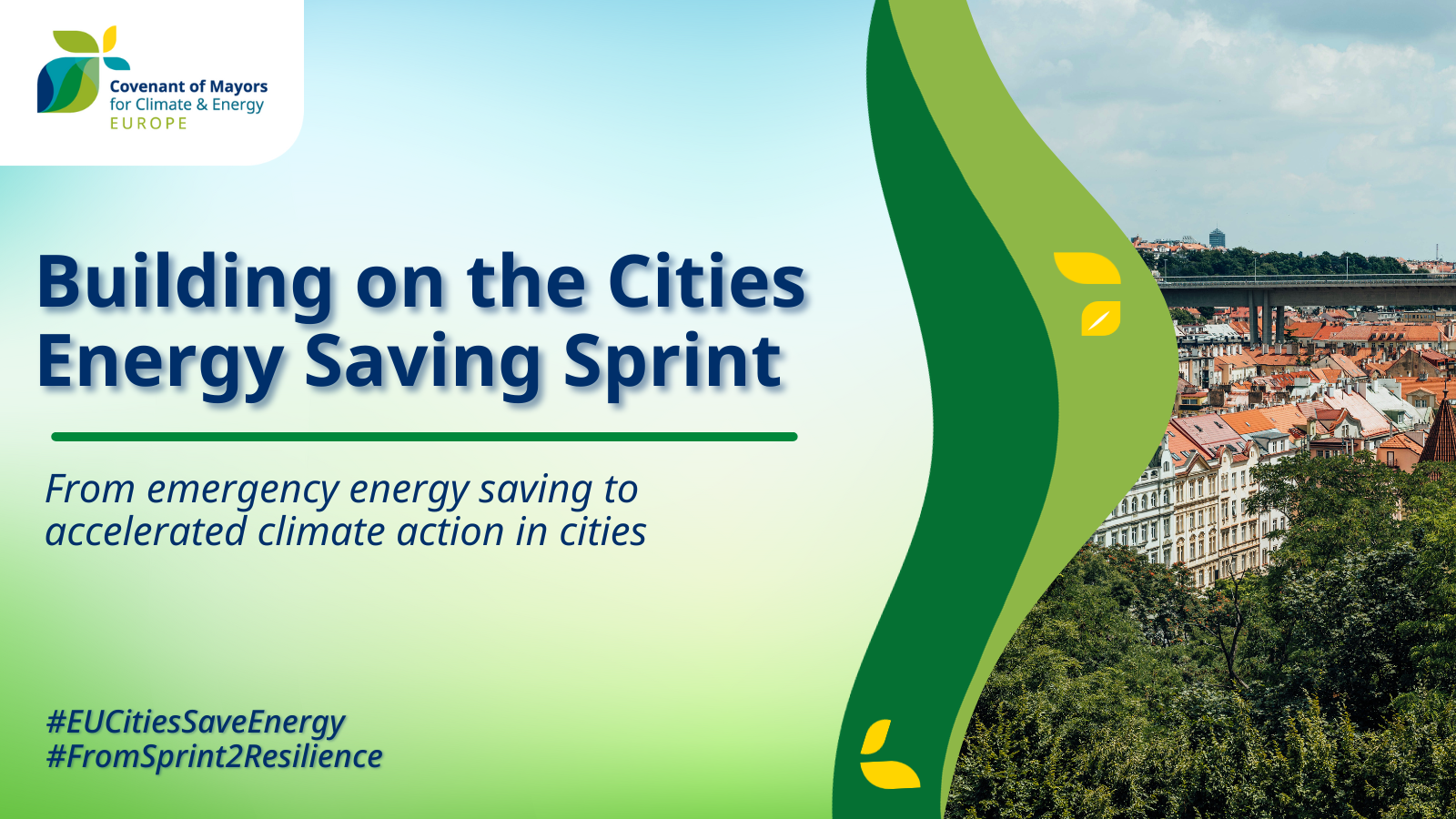
Last winter, in the face of the mounting energy crisis and in response to the European Commission’s call to action, the city of Riga committed to reducing energy consumption by 15%, in line with its Sustainable Energy and Climate Action Plan. Motivated by a strong sense of solidarity with the Ukrainian people, the Latvian capital has also set an ambitious target of slashing its emissions by 70% (compared to 1990 levels) and becoming climate neutral in municipal infrastructure by 2030, as part of the EU Mission for Climate-Neutral Cities by 2030. And they understand that saving energy can not only make them energy independent, but also put them on the path to reaching this ambition.
Riga has thus made energy saving a driving force of their climate and energy action. They quickly realised that by reducing energy consumption, they were also reducing costs; opening a window to reinvest what they saved into building a more sustainable and climate-neutral future. By ensuring energy savings are directly feeding their Sustainable Energy and Climate Action Plan (SECAP), Riga is setting an example of how to turn Sprint measures into a structural solution to tackle climate change beyond the energy crisis.
Measures taken faced with the energy crisis
One of the main areas of action for saving energy in the city last winter was public lighting. By switching to LED lights, dimming public lighting and removing regulations mandating the illumination of façades, the city reduced its energy consumption from public lighting by 16% in the winter of 2022. In addition to implementing energy efficiency measures, the city also focused on saving energy by limiting temperatures and reducing heating hours in public buildings, as well as regulating temperatures in residential buildings connected to the city-owned district heating network. Through these measures, the city saved 15 to 18% of the energy it consumes for heating.
Allocating savings to sustainable action
The city estimated that the energy saved by implementing these measures translated to cost reductions of approximately 4 million euros for the previous year. These savings were monitored and calculated using the Energy Management System set up by Riga Energy Agency following the review of the city’s SECAP in 2021. Seeing these cost reductions as an opportunity, Riga Energy Agency decided to allocate a budget of 4 million euros to support the implementation of SECAP measures.
Managed by Riga Energy Agency and available to any municipal infrastructure or department, this internal fund enables the city to roll out some of the priorities listed in its SECAP developed in 2022. These priorities include installing solar panels, replacing gas boilers and inefficient lighting systems, and implementing greening measures, such as tree planting, to absorb emissions. This budget has the potential to fund actions in around 60 municipal buildings – mainly schools and kindergartens – which can now apply for funding to switch to more efficient lighting systems.
Riga’s SECAP, developed in 2022, has become the guiding light for its journey to climate neutrality by 2030. Its objectives include the CCC (Climate City Contract) that Riga is currently developing within the framework of the EU’s Mission of 100 Smart and Climate-Neutral Cities by 2030. Using the re-allocated budget effectively will enable Riga to roll out the important projects laid out in these two key plans.
Setting up a long-term programme
With the intention of replicating the programme beyond last year’s savings, the city is currently setting up a monitoring system to report on how much CO2 and energy is being saved, and the equivalent cost reduction. To ensure accountability and add economic value to their efforts, Riga established a regulation that pegs the worth of 1 euro to every ton of CO2 saved throughout the lifecycle of their projects. This approach reflects Riga's commitment to quantifying their environmental contributions in real economic terms.
At present, the financial department handles energy bills, while the actual energy consumers are various municipal departments and entities, such as schools. This arrangement disconnects schools from their energy budget, resulting in a lack of incentive to save energy. To address this issue, it is proposed to shift responsibility for the energy budget to Riga Energy Agency, in conjunction with its Energy Management System. This change would also empower the agency to efficiently allocate any savings resulting from energy consumption reductions initiated by schools themselves. By doing so, the agency can motivate schools to save more energy, while enabling them to undertake infrastructure upgrades and other essential projects in the coming years, fostering a more sustainable and forward-looking approach to energy consumption across municipal departments and entities.
Alongside the city’s resourceful approach, this programme plays an important role in uniting the municipality around a common climate neutrality target. Benefitting from widespread political support from the City Council, the programme has become a top priority. This has brought all hands on deck, fostering collaboration across the city’s departments on the various SECAP actions, which is essential for effective implementation.
From Sprint to SECAP
As Riga’s ambitions remain high, they know that what was launched with the energy crisis can make a difference if sustained in the long run. Thus, Riga plans to uphold the target of 15% energy savings and pursue energy saving measures, from switching off public lights when surpassing a certain price, reducing temperatures in buildings, and running educational campaigns to keep citizens aware and involved. In the end, all this work is already embedded in the long-term work laid out in their SECAP, the basis of all their actions.
Riga’s approach shows us that the Cities Energy Saving Sprint, in essence, is just another instrument and tool to bolster a city’s SECAP and boost implementation.
Sustain your Sprint: keep saving energy!
Follow Riga’s example and join this new phase of the Cities Energy Saving Sprint: sustain and build on last winter’s success, as a way of comprehensively tackling the energy and climate crises as one.
Check out our tips for energy saving here.
Share your experience: What is your city doing to keep saving energy?
Which measures from last winter’s Sprint is your city upholding? How are you integrating these into your city’s long-term actions?
Share your experience with us and other cities by sending us an email at energy-saving-sprint@eumayors.eu

Building on the Sprint: Although Europe may have gotten through last winter, the energy crisis is not yet over. Meanwhile, the growing hazards brought about by the climate crisis, from heat waves to droughts and floods, are putting increasing pressure on local governments throughout the continent. Last winter’s Cities Energy Saving Sprint has shown us that both crises are closely intertwined and must be fought in the same battle, applying common solutions. Find inspiration from success stories of the Sprint to keep saving energy in your city, preparing for the upcoming winter while accelerating your long-term transformation towards climate neutrality.
#EUCitiesSaveEnergy #FromSprint2Resilience
Details
- Publication date
- 28 September 2023
